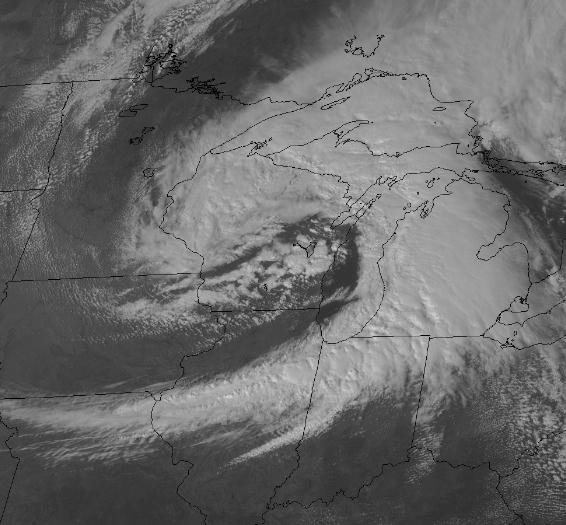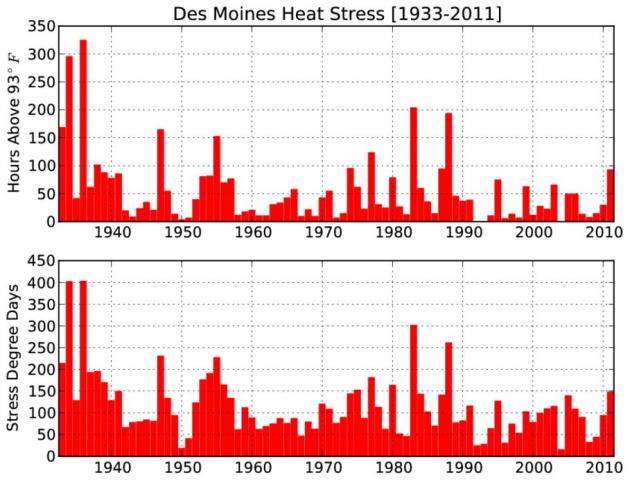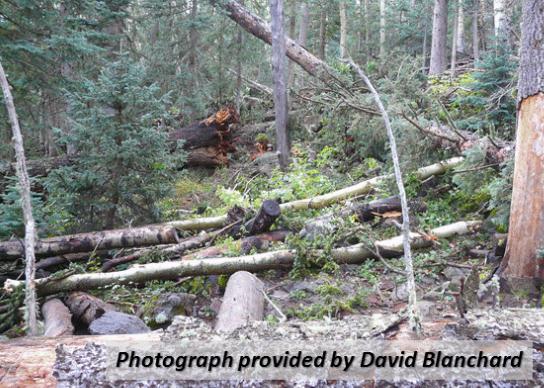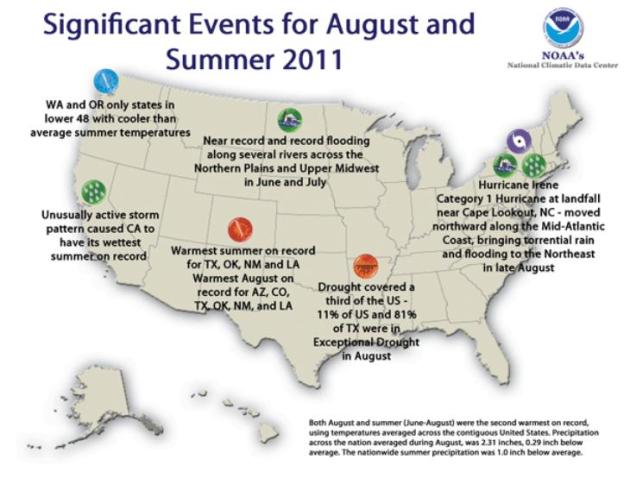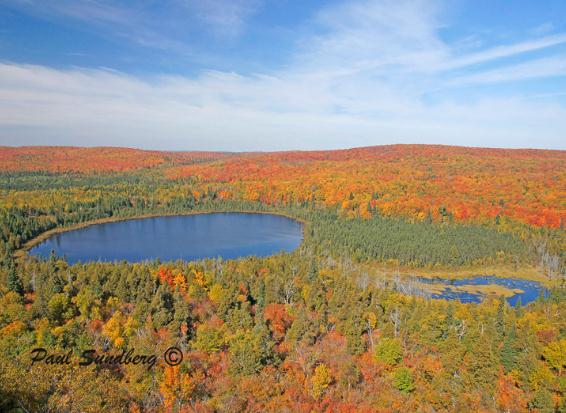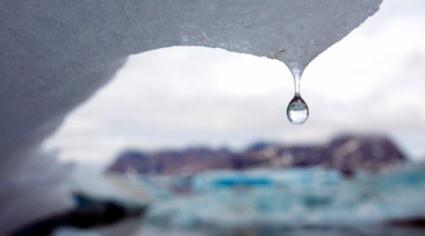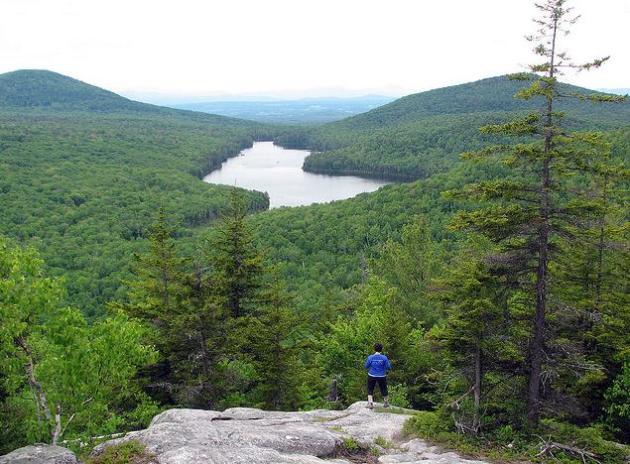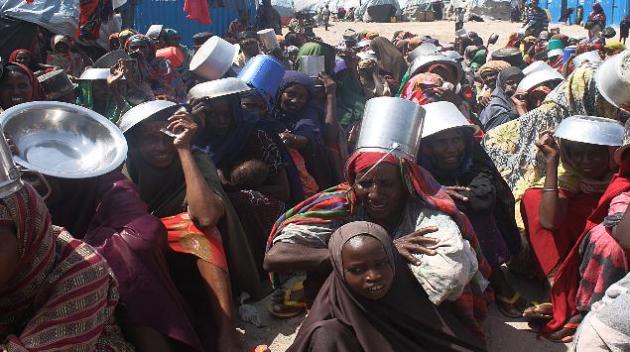32 foot seas and wind gusts as high as 60-65 mph. predicted for Lake Superior through Friday morning.
Alberta Clipper. Named after the clipper ships of the 1830s and 1840s (fastest vessels on the high seas, capable of forward speeds as high as 30 knots), Thursday's Alberta Clipper whipped up a few hours of rain and tropical storm force wind gusts. Unlike last week's stationary closed low - this clipper will keep on (clipping) southeast, a ridge of high pressure resulting in bright sun and less wind today.
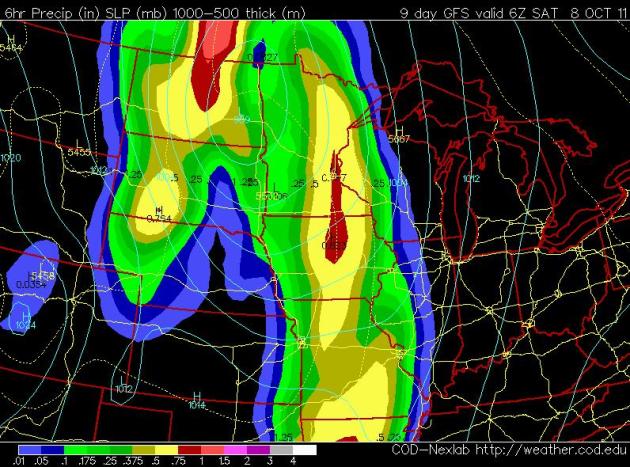 Next Chance Of Significant Rain
Next Chance Of Significant Rain. It's a dry forecast for most of the Upper Midwest through at least Thursday of next week. The map above shows moderate to heavy rain with a vigorous cold frontal passage a week from today - the next chance of widespread rain.
Ophelia Becomes The 4th Named Hurricane of 2011. Only 2005 had more named hurricanes than 2011. This year has seen the second greatest number of named storms on record, according to NHC.
Early Snow For New England? It's not definite (yet), but the long-range GFS model is hinting at some 1-2" snowfall amounts for northern New York State. That's early - the average date of the first (measureable) snowfall in the Catskills is around November 5.
"...
Rob Jackson, the director of the Duke Center on Global Change, acknowledges this backdrop of uncertainty. "Can anyone say with certainty that this is climate-change related? Absolutely not," he said. But Jackson -- who went to college and taught in Texas and continues to visit frequently to see family -- suggested that the scale of the Texas wildfires is starting to change the minds of some scientists who have traditionally been hesitant to blame specific weather events on climate change. "The heat and drought I saw in August is almost enough to make me say that climate change is playing a role, amplifying other factors," Jackson said. "I've never said that before about any weather event."- from a post below from
Politifact.
...RECORD MONTHLY RAINFALL SET AT ALLENTOWN, PENNSYLVANIA...
THE 12.77 THROUGH THE FIRST 28 DAYS OF SEPTEMBER HAS ALREADY
ECLIPSED THE PREVIOUS RECORD OF 11.57 INCHES SET IN 1999.
THIS IS THE SECOND CONSECUTIVE WETTEST MONTH ON RECORD AT ALLENTOWN.
THE AUGUST 13.47 INCH TOTAL WAS THE ALL TIME MONTHLY
RECORD PRECIPITATION AMOUNT FOR ALLENTOWN..
THE PERIOD OF RECORD DATES BACK TO 1922.
New York State Rainfall Totals:
The NWS just released storm totals for counties in New York. Ulster county was hit hardest, getting almost 8 inches of rain in 24 hours.
...ULSTER COUNTY...
WEST SHOKAN 7.25 645 AM 9/29 WEATHERNET6
PHOENICIA 6.13 608 AM 9/29 WEATHERNET6
SAUGERTIES 2.99 650 AM 9/29 WEATHERNET6
KINGSTON 1.24 437 AM 9/29 WEATHERNET6
 Flood-Weary Pennsylvania Residents Deal With More Water
Flood-Weary Pennsylvania Residents Deal With More Water. Rainfall across much of the Keystone State has been 2-5 times more than average for September, over a foot of water just this month. The
Houston Chronicle has more details:
"Flood watches remain in effect for much of flood-weary eastern Pennsylvania, where rising waters had some people fearing for their homes for a fourth time in a month. An area stretching from Philadelphia north to the New York border was forecast to get more rain Thursday and concerns over runoff prompted flash flood warnings. Some residents in Harveys Lake, Luzerne County were evacuated late Wednesday after water ran over the Twin Lakes dam. Harrisburg River Rescue retrieved about 10 people from homes in Swatara Township, where the remnants of Tropical Storm Lee caused extensive flood damage earlier this month. Flooding from Hurricane Irene late last month was followed by record flooding in many areas because of Lee. That flooding damaged thousands of buildings on a scale not seen since Hurricane Agnes in 1972. Further north in Huntingdon County, officials Wednesday declared a disaster emergency in Three Springs, Mount Union and Saltillo boroughs after flash flooding this week. More than 3 inches of rain fell in one 40-minute span, county emergency management director Adam Miller
said Thursday." (photo above courtesy of the
ibtimes.com).
Ophelia's Track. A Tropical Storm Watch is posted for Bermuda, but Ophelia should track east of the island. There's even a small chance it may reach Nova Scotia (Canada) as a weak, category 1 hurricane by Monday of next week. Map courtesy of NHC and Ham Weather.
Stressing Out. Here's an interesting post from the
Iowa Environmental Mesonet: "
This year has certainly seen its share of hot weather as compared with recent years. The featured chart presents two measures of heat stress. The top panel is the number of hours where the temperature was at or above 93 based on data from the Des Moines Airport sensor. The bottom panel presents the traditional stress degree days, which is a measure of the exceedance of 86 by the daily high temperature. For both measures, this year has been the warmest since the drought year of 1988. The largest values, by a large margin, on the chart are from the dust bowl in the 1930s."
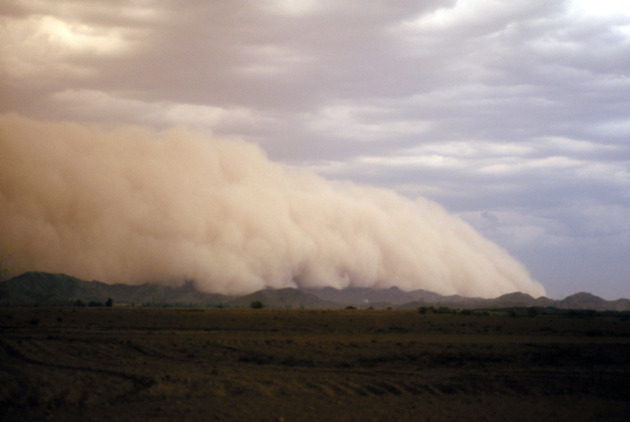 Wednesday's Haboob In Arizona
Wednesday's Haboob In Arizona. More details courtesy of WJLA-TV: "
As yet another dust storm swept over Arizona yesterday, a dozen grit-lost automobiles met on an interstate in an ear-shattering mass collision. They then sat there smoking for hours with emergency officials on hold until the air stopped resembling the inside of a vacuum bag. Haboobs are a regular feature of the Southwest Monsoon, a time of summer when high pressure gathering in the east Pacific Ocean directs waves of moist sea air northward. This year’s crop is a bit rowdier than usual, though. Stretching up to nearly a mile in some cases, they are arriving with regularity: Two alone have struck in the past four days. Yesterday’s was the fourth really big dust storm in Arizona this summer. It’s not uncommon for a handful to occur during an average year, but what is uncommon, as at least one meteorologist has noted, is the power of 2011′s haboobs. They have knocked down power poles and P.O.’d countless car buffs by painting their rides with desert dirt. Chalk up the dustiness of these particular haboobs to abnormally dry conditions in Arizona – the rainfall around Phoenix since last October is more than three-and-a-half inches below average."
Tornado On Humphrey's Peak (Arizona). Wait, a tornado at an elevation of nearly 10,000 feet? Yep, according to the National Weather Service. Click
here to read more about this rare (mountain) tornado. Some additional stats here:
State Of The Climate: August 2011. Data courtesy of NOAA's
NCDC, National Climatic Data Center:
The NWS has released its state of the climate report for August.
New York, New Jersey, Vermont, and New Hampshire had their wettest August on record, and the rest of the northeast had a top five wettest August.
At the other end of the spectrum, the South had one of its driest Augusts on record.
The Texas drought has gotten so bad that tree rings, dating back to 1550, have shown that only one other summer has been this bad, which occurred in 1789.
A New Way To Improve Dust Storm Prediction Accuracy? The Air Force is doing some cutting edge research on dust storms, and trying to predict them in advance. It's obvious that military operations can be greatly impacted by blowing dust - getting a better handle on blowing dust can give commanders in the field an operational edge, as reported by the
Laughlin Air Force Base: "
The saying "leave it better than when you found it" is constantly used in the military with all the moving and relocating that is done. Staff Sgt. Thomas Jenkins, 47th Operations Support Squadron Weather Flight NCO in charge of weather systems, did just that and more after a recent deployment to Iraq. Jenkins, while deployed to Forward Operating Base Kalsu, realized that a better method to predict dust storms could be developed. He decided to give himself a research project before devising a plan that ultimately improves dust storm forecasts accuracy rating by 80 percent. The Air Force recognized this achievement and are scheduled to begin training personnel and distributing to areas of responsibility that will benefit from the new tool. "We typically work with water based weather such as rain, snow and thunderstorms," he said. "When you're out in CENTOM (U.S. Central Command), you don't typically see that much, it's more blowing dust and sand storms. Because our models aren't built to work with that, it tends to be a little more unreliable than what your typical weather forecast would be. So I did about five months of field research looking for a way to take the tools we had and make them work better. I was able to come up with a math formula that accomplished that."
ISU-Texas Game To Be The "Wind Bowl". This makes sense, considering Texas and Iowa are America's two largest wind producing states. Here's the story from the
Des Moines Register: "
Befitting a matchup of universities from the two largest wind producing states in the U.S., the game between Iowa State and Texas Saturday at Jack Trice Stadium in Ames has been dubbed the “wind bowl” by the American Wind Energy Association. For the game, the stadium will be 100-percent powered by wind through the purchase of Green-e-certified Renewable Energy Certificates to offset energy used. The American Wind Energy Association and Iowa State’s College of Engineering will join MidAmerican Energy, ITC Midwest, and Siemens for live, on-field recognition of their work in wind power during a break in the game. While Iowa leads the nation in wind penetration, with about 4,200 megawatts of wind power deployed. Texas is tops in total wind installations, with over 10,000 MW deployed." (photo credit
here).
 Windy Day - May Blow Away!
Windy Day - May Blow Away! Speaking of wind, check out this cute
YouTube clip: "Check out these dogs in Annandale, Minnesota. This video is from Amy Sparks. She says “...very windy day of my two Havanese dogs, Jubilee & Posh in Annandale, MN at the municipal city park where they usually like to “run like hell” but couldn’t because they may have been blown away.” Yep, I hate it when my dog (Leo) blows away. He doesn't like it much either...
Kindle Fire vs. Apple iPad. What Amazon's Tablet Has That iPad Lacks. Here's more information on the new gadget (productivity device) from
Huffington Post: "
At first glance, the Amazon Kindle Fire doesn't appear to be an iPad killer. When you compare the hardware and technical specs of the new Amazon tablet next to those of the Apple tablet, there doesn't seem to be much of a comparison: Apple's 10-inch, 16GB iPad is a far cry from the 7-inch, 8GB first-generation Kindle Fire. And yet the fact is that, at the end of the day, they're both tablets, which means that consumers will probably be choosing between one or the other when it comes time to get a tablet. Unless you're doing really well this recession, it would be hard to justify shelling out money for both an iPad (starting at $499) and a Kindle Fire (which costs $199, less than half of what it costs for Apple's tablet)."
Amazon's Tablet Leads To Its Store. The New York Times has more information on the Amazon Fire
here.
* photo above courtesy of
Paul Sundberg Photography.
Climate Stories...
Colbert: "Global Warming Is Real Folks". Here's a spot-on monologue from Stephen Colbert, courtesy of the
New York Times and Comedy Central: "
Stephen Colbert spent some time on Monday night, between Radiohead songs, dissecting realities on global warming and energy using very sharp satirical tools. Here’s one piercingly true line:
"In the face of all this mounting evidence, America has stood with one voice and boldly proclaimed: “Eh.”
After a performance by Radiohead, he sat with Thom Yorke and Ed O’Brien from the band and dug in again on Americans but also on how a rock band can square its carbon concerns with its energy needs (like a masterful juggler adding a ball in mid-performance, he threw in a jab at “clean coal” in the process)."
Climate Change Will Cost Canada Billions: Report. Here's the story from
CTV Winnipeg: "
Climate change will cost Canada about $5 billion a year by 2020, a startling new analysis commissioned by the federal government warns. Those costs will continue to climb, to between $21 billion and $43 billion a year by the 2050s, the report estimates. It all depends on how much action is taken to cut global greenhouse-gas emissions, as well as how fast the population and the economy grow too. In the worst-case scenario, climate change could cost as much as $91 billion per year by 2050. The report was issued Thursday morning by The National Roundtable on the Environment and the Economy. Its members are business leaders, academics and researchers who were chosen by the federal government to advise them on how to handle the climate change crisis, while also continuing to stimulate the economy. In its report, the think-tank projects the cost of climate change based on four scenarios, ranging from slow population and economic growth combined with low climate change, to rapid population and economic growth and high climate change."
President Obama Slams Rick Perry On Climate Change, Citing Texas Wildfires. How strong is the link between climate change and the record-setting wilfires that have swept across Texas this year? Here is a thorough piece from
politifact.com: "
During a Sept. 26, 2011, speech at a Democratic National Committee fundraising event in San Jose, Calif., President Barack Obama aimed some attack lines at the Republican Party. "Some of you here may be folks who actually used to be Republican but are puzzled by what’s happened to that party...." Obama said in comments that, according to the White House’s transcript, were punctuated by laughter. "I mean, has anybody been watching the debates lately? You’ve got a governor whose state is on fire denying climate change. No, no, it’s true. You’ve got audiences cheering at the prospect of somebody dying because they don’t have health care, and booing a service member in Iraq because they’re gay. That’s not reflective of who we are. We’ve had differences in the past, but at some level we’ve always believed, you know what, that we’re not defined by our differences. We’re bound together." After several readers brought it to our attention, we zeroed in on Obama’s comment that "you’ve got a governor whose state is on fire denying climate change." The governor in question is Rick Perry of Texas -- one of the leading candidates in the Republican presidential primary and therefore a potential challenger to Obama in his bid for a second term next year. As for the fires Obama mentioned, Texas has been experiencing one of its most severe wildfire seasons in history. According to the Texas Forest Service, 3.8 million acres burned and 2,742 homes were destroyed by wildfires between Nov. 15, 2010 and Sept. 26, 2011. A spokesman for Perry, Mark Miner, thought Obama’s comment was unfair, telling ABC News, "It’s outrageous President Obama would use … the worst fires in state history as a political attack." (photo courtesy of CBS News).
The Not-So-Green Mountains. Not everyone is enthusiastic about wind energy and wind turbines in their back yards. The reality? Every form of energy creation has it's own set of risks and challenges, including renewables. The
New York Times has an Op-Ed focused on what wind power could mean for Vermont's Green Mountains: "
Craftsbury, Vt.BULLDOZERS arrived a couple of weeks ago at the base of the nearby Lowell Mountains and began clawing their way through the forest to the ridgeline, where Green Mountain Power plans to erect 21 wind turbines, each rising to 459 feet from the ground to the tip of the blades. This desecration, in the name of “green” energy, is taking place in Vermont’s Northeast Kingdom on one of the largest tracts of private wild land in the state. Here and in other places — in Maine and off Cape Cod, for instance — the allure of wind power threatens to destroy environmentally sensitive landscapes. Erecting those turbines along more than three miles of ridgeline requires building roads — with segments of the ridgeline road itself nearly half as wide as one of Vermont’s interstate highways — in places where the travel lanes are now made by bear, moose, bobcat and deer. It requires changing the profile of the ridgeline to provide access to cranes and service vehicles. This is being accomplished with approximately 700,000 pounds of explosives that will reduce parts of the mountaintops to rubble that will be used to build the access roads." (photo above courtesy of
flickr).
Climate Change Threatens Yellowstone Region.
Reuters has the story: "
A warming climate is imperilling the wildlife and landscapes in the Yellowstone National Park region, two environmental groups said in a study. The report by Rocky Mountain Climate Organization and Greater Yellowstone Coalition shows temperatures in the past decade in the Yellowstone area have exceeded the rate of warming worldwide compared to the 20th Century average. Left unchecked, climate change is likely to transform the greater Yellowstone area, which includes parts of Wyoming, Idaho and Montana and encompasses two national parks, six national forests and three wildlife refuges, the report said.The Yellowstone National Park region is one of the world's last largely intact temperate ecosystems."
Climate Change Compounds Global Security Threat, British Admiral Says. The story from
CNN: "
Stresses from global climate change are increasing the threat of wars around the world, a British admiral said Wednesday. Royal Navy Rear Adm. Neil Morisetti told students and faculty at Georgia Institute of Technology that global climate change threats to food, water, land and energy will present substantive security challenges in regions of the world where there are already stresses. "Those climate stress multipliers are increasing the threat of armed conflict around the world," Morisetti said. Morisetti pointed out that existing stress points form a band around the globe, running from Central and South America, across Africa, the Middle East and south Asia. That band, he said, intersects with the regions of the globe most susceptible to climate change. With climate change, Morisetti said, "we're going to add more to that cocktail." Morisetti, who holds the title of the British government's climate and energy security envoy, is on a tour of the United States, speaking to academics and military officials. He says climate change represents a significant challenge for governments because the "new and emerging threat doesn't fit into the traditional stovepipe of governments. "It's a threat that won't manifest for the next 15 to 20 years, which means that you have to look at potential threats, not particular threats."
Climate Change Scenarios Confirm Warming. Here's a look at how climate change is impacting Switzerland, courtesy of
swissinfo.ch: "
Average temperatures and extreme weather events are set to increase in Switzerland, a climate change report has found. In the best case scenario – supposing a strong reduction in greenhouse gas emissions in the coming decades – temperatures would still rise by nearly two degrees celsius by the end of the century. In the worst case, average seasonal temperatures would rise by nearly five degrees. Using a new generation of global and European-scale regional climate models, Swiss Climate Change Scenarios CH2011 presents three different possible effects on temperatures and precipitation resulting from three greenhouse gas emissions scenarios."
